
The best neuroscience news stories from January 2021
January's best neuroscience research includes a snap-freezing method of instantly preserving small pieces of brain tissue to study it in its natural state, using neurofeedback to make prostheses feel more natural, and the discovery that anticoagulants reduce brain metastases in mice.
1. Using artificial intelligence to find new uses for existing medications
A machine-learning method that helps determine which existing medications could be used to treat diseases that they are not currently prescribed to treat, has been developed by scientists at Ohio State University.
With the aim of speeding up the, usually time-consuming and expensive, process of drug repurposing, the method uses large patient care-related datasets and high-powered computation to produce repurposed drug candidates.
The effects of the medications on a set of outcomes are predicted by the deep learning algorithm, which takes into account the multiple factors that can affect how effective a medication is, including age, sex and disease severity.
It is hoped that this method can be applied to identify drugs that can be used to treat diseases that there is no current treatment for.

Re-purposing medication
2. Snap-freezing reveals a truer structure of brain connections
A snap-freezing method, which uses a combination of liquid nitrogen jets and very high pressures, has been used by scientists at EPFL to instantly preserve small pieces of brain tissue.
This brain tissue was then imaged at high-resolution to reveal the true structure of dendritic spines. In the adult brain, most synaptic connections are located on dendritic spines, with the size and shape of the spine determining the efficiency of signal transmission from one neuron to another. As dendritic spines are so small, and because it is difficult to preserve brain tissue in its natural state, it has been hard to define the true structure of dendritic spines.
Although the overall structure was shown to be similar to what previous studies have shown, the researchers found that some of the spines have significantly thinner necks. As neck diameter impacts how a synapse influences the neuron, this is an important finding.
This research has demonstrated that the snap-freezing method has excellent potential for enabling researchers to better understand the true architecture of cells and tissues.
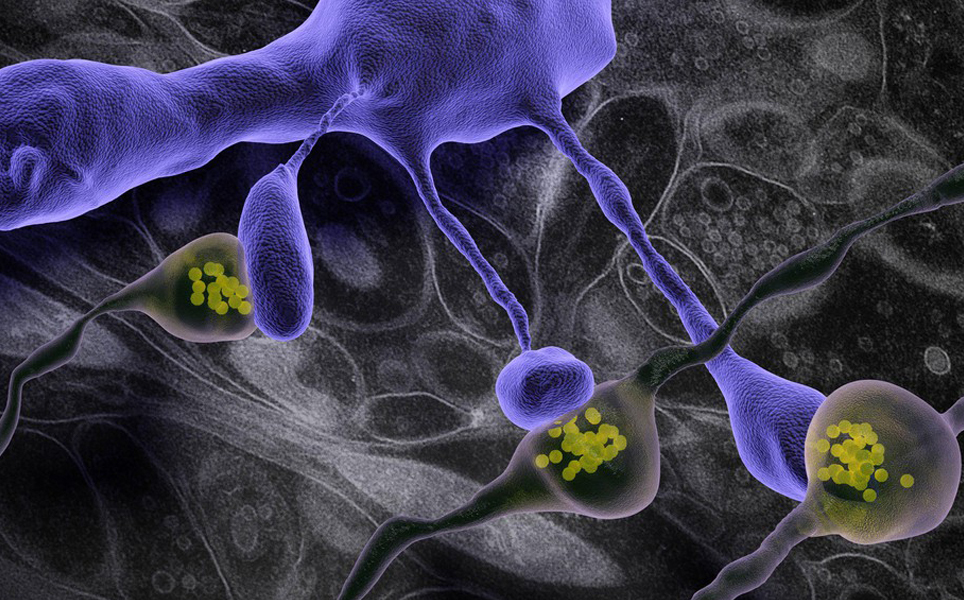
Snap-freezing to study brain structures
3. Peeking inside ‘mini-brains’ could boost understanding of the human brain in health and disease
After producing high-resolution 3D images of single neurons within intact ‘mini-brains’, scientists at the Wyss Center for Bio and Neuroengineering suggest that examining these could give insight into the progression of disease in an individual, and how an individual could respond to different drugs.
The mini-brains are collections of different types of human brain cells, the size of a pin-head. Personalised mini-brains are grown from stem cells collected from a sample of human hair or skin.
This is the first time that the internal anatomy has been revealed in detail; although there have been advances in growing the mini-brains, it has been difficult to get a detailed understanding of what is going on inside them. Previous methods have involved slicing the mini-brains to view them under a microscope, which can damage them. However, in this research, a combination of techniques was used to label individual neurons within the brain and to make the whole sample transparent, enabling high resolution, 3D images of single neurons within intact brains to be produced.
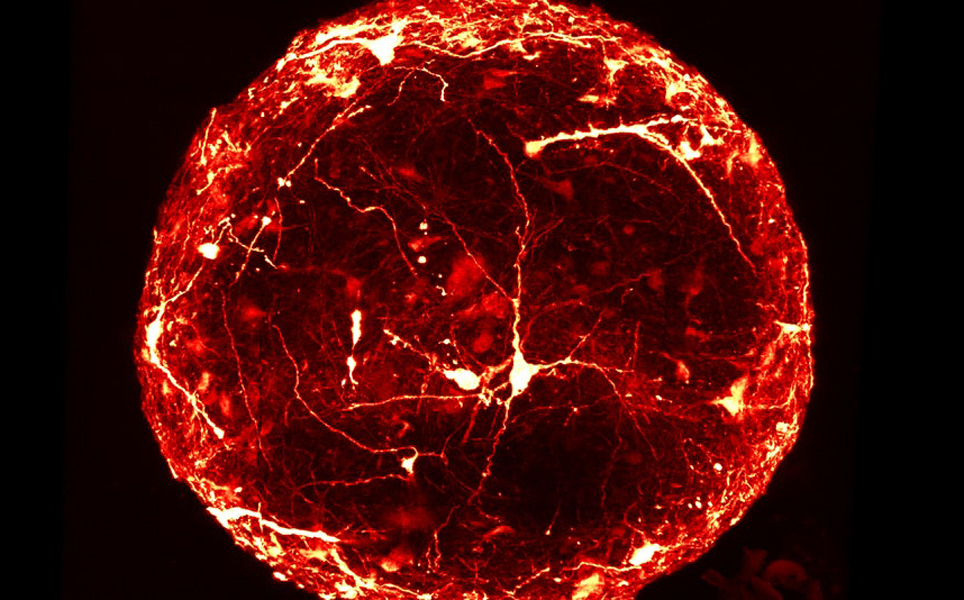
Mini-brains: Windows into the human brain
4. Perceiving prosthesis as lighter thanks to neurofeedback
Scientists at ETH Zurich have shown that connecting prostheses to the nervous system helps amputees perceive the prosthesis as weighing less and feeling more like a natural part of their body.
Leg amputees often perceive their prostheses as being too heavy, even though prosthetic legs are usually less than half the weight of a natural limb. However, the researchers found that enabling sensory signals to be transmitted from the prostheses to the nervous system helps amputees perceive it as significantly lighter.
The prostheses provides feedback to the nervous system via electrodes implanted into the thigh, which connect to nerves in leg. Tactile sensors under the sole of the prosthetic foot and angle sensors in the prosthetic knee joint send information which is converted into pulses of current and transmitted to the nerves in the leg. In a further study, neurofeedback was found to reduce the perceived weight of a prosthesis by 23%, as well as enabling faster and safer walking.
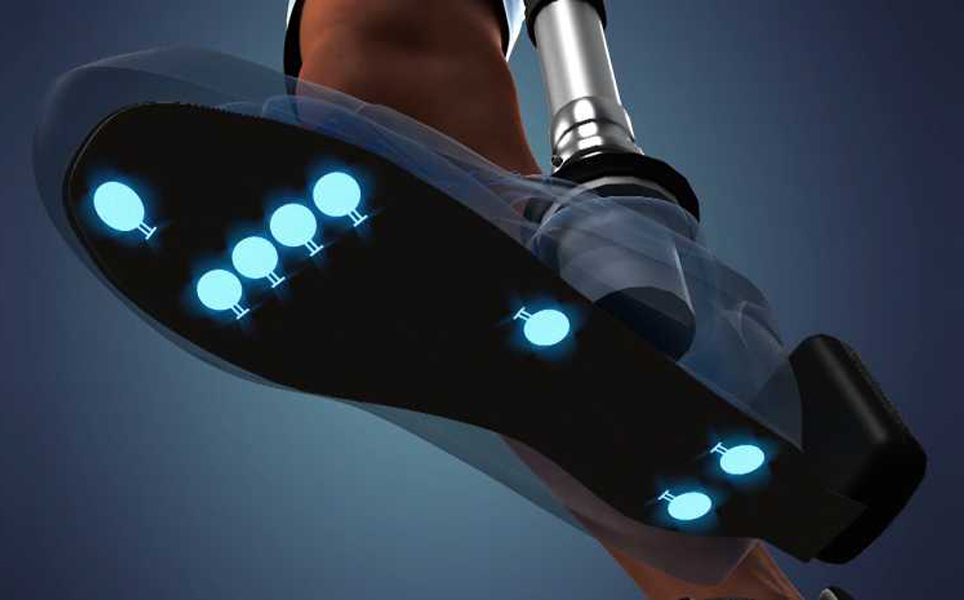
Making prostheses feel natural
5. Anticoagulants reduce the number of brain metastases in mice
Scientists from the German Cancer Research Center and Heidelberg University Hospital have shown in mice that anticoagulants reduce the number of brain metastases. They do this by preventing cancer cells from exiting blood vessels and entering brain tissue.
In vivo multiphoton imaging enabled the researchers to investigate deep brain tissue and track individual cancer cells. To form metastases, cancer cells promote the formation of clots, thrombi, helping them to stay in the fine blood vessels and then penetrate through the vessel wall into brain tissue. The researchers found that cancer cells around which no clot formed, were unable to penetrate the capillary wall and grow into a brain metastasis.
After discovering that thrombus formation is essential for tumour cells to leave the capillary and form a brain metastasis, they tested the drug dabigatran, a thrombin inhibitor, and found that it significantly reduced the number of metastases that formed. Using antibodies, inhibiting von Willebrand factor, a different blood clotting factor, also reduced thrombi formation in the mice, and therefore reduced the number of brain metastases that developed.
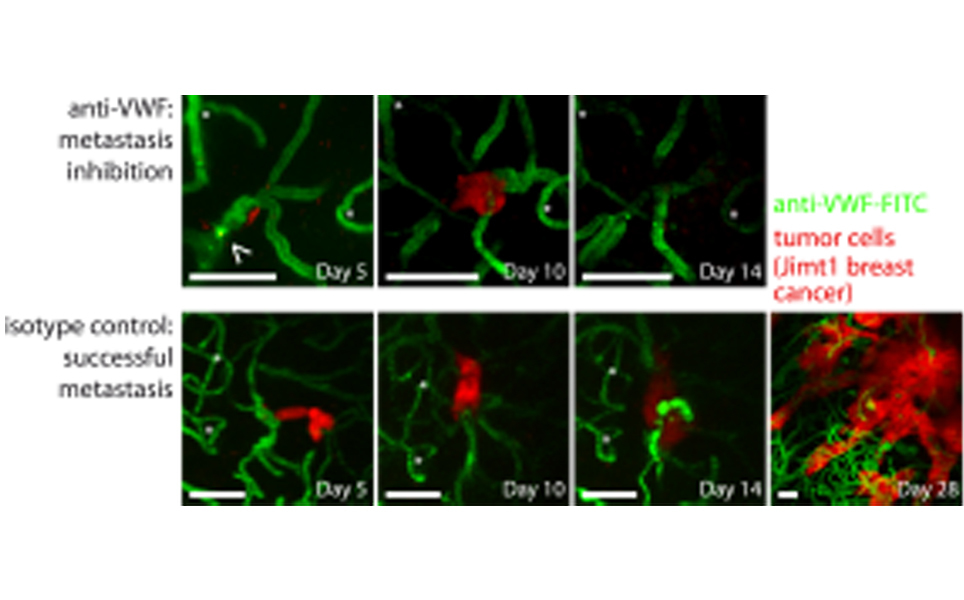
New hope for metastatic cancer treatment
6. Designer cytokine lets paralyzed mice walk again
Using gene therapy, researchers at RUB have successfully enabled a mouse that was paralysed due to spinal cord injury to run again.
Previously, paralysis caused by damage to nerve fibres in the spinal cord has been impossible to repair. Produced using genetic engineering, the designer cytokine hyper-interleukin-6 (hIL-6) was shown in previous studies to be able to stimulate nerve cells to regenerate.
In this research, the team induced nerve cells in the mouse motor sensory cortex to produce hIL-6 themselves. After two to three weeks, previously paralysed animals were able to start walking.
This offers hope for being able to treat paraplegic patients in the future.
Find out more
7. How does the immune system keep tabs on the brain?
Researchers at Washington University School of Medicine in St. Louis have discovered how the immune system monitors what is happening in the brain, enabling an immune response to be initiated if signs of infection, disease or injury are detected.
Immune cells are stationed in the meninges of the brain and spinal cord, the researchers found. Here, they sample fluid as it leaves the brain, surveying the brain from outside, and then entering when a problem is identified.
Understanding this immune system surveillance of the brain could help modulate the immune system in order to treat conditions that are driven by inflammation in the brain, such as Alzheimer’s disease, multiple sclerosis and schizophrenia.
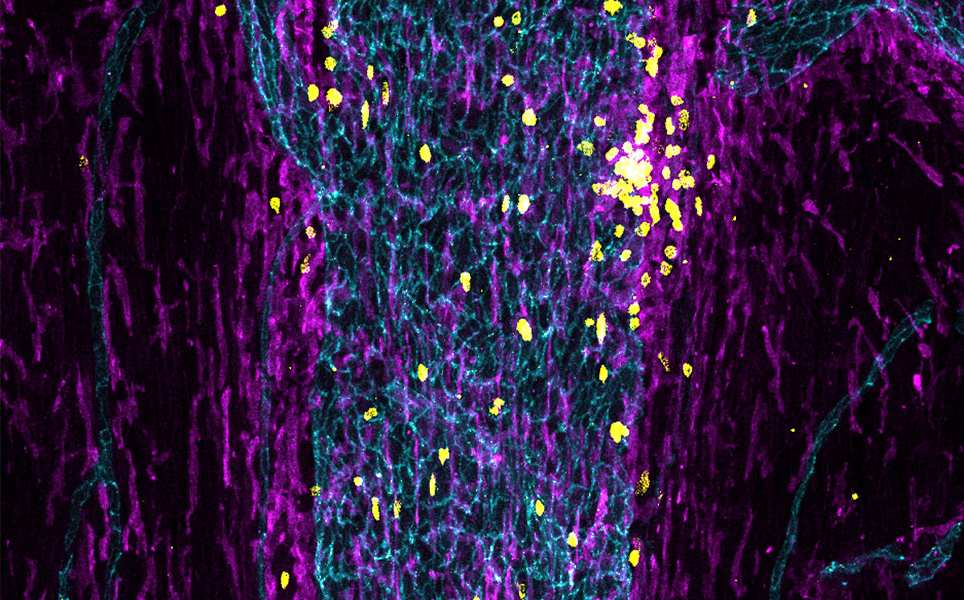
Surveillance system for the brain
8. Study suggests compound protects myelin
A compound, called sobetirome, developed by researchers at Oregon Health & Science University, appears to protect the myelin sheath that covers nerve cells in the brain and spinal cord. This means it could be used to treat or prevent the progression of central nervous system disorders such as multiple sclerosis.
Sobetirome was already known to be able to effectively stimulate the repair of myelin following damage. The researchers have discovered that the compound has a dual effect, and is also able to protect myelin. It is believed that it does this by stimulating a protective response in the cells that make and maintain myelin, as well as reducing microglia activity, which is involved in causing damage in multiple sclerosis.
This drug has potential to protect the central nervous system from damage, reducing disease severity.
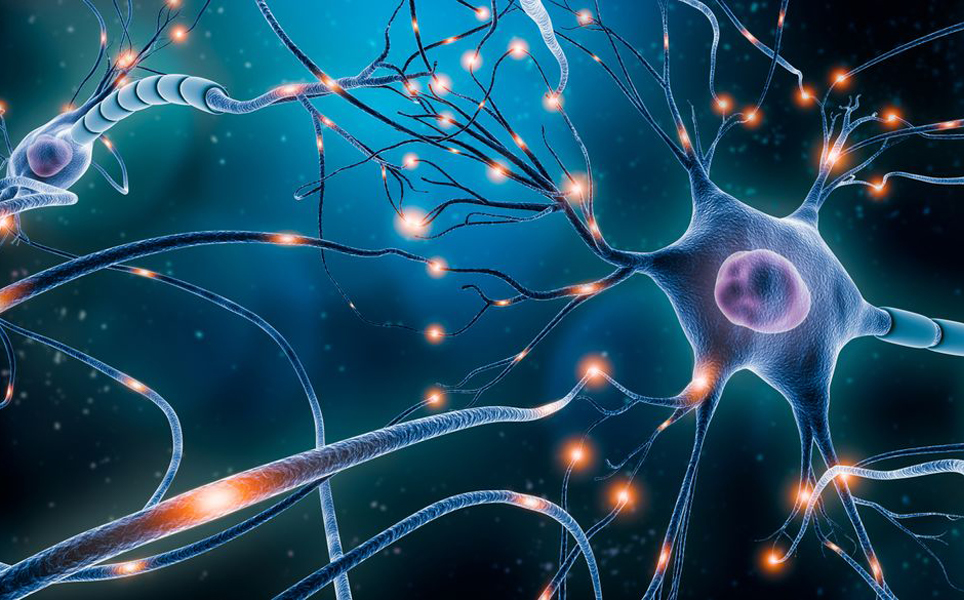
Protecting myelin
9. One in five brain cancers are fueled by overactive mitochondria
A study by Columbia University has found that overactive mitochondria provide the additional energy that up to 20% of glioblastomas require to survive, suggesting a potential new treatment option for these cancers.
The scientists also discovered that drugs that inhibit mitochondria are able to have powerful anti-tumour effects on the mitochondrial-driven subtype of brain cancers.
This classification of brain cancers, based on their core biological features, should help improve therapeutic options for patients.

More here
10. Routine eye scans may give clues to cognitive decline in diabetes
Routine eye scans in older people with type 1 diabetes could identify changes in the retina that may be associated with memory problems and cognitive disorders, research by the Joslin Diabetes Center has found.
People with diabetes are more likely to develop Alzheimer’s disease and other cognitive disorders as they age, compared to people without diabetes. The results from this research could enable earlier detection and better treatment of cognitive decline in these patients. Current detection methods are difficult and expensive, and people are usually only tested when they show symptoms of cognitive decline, resulting in limited treatment options.
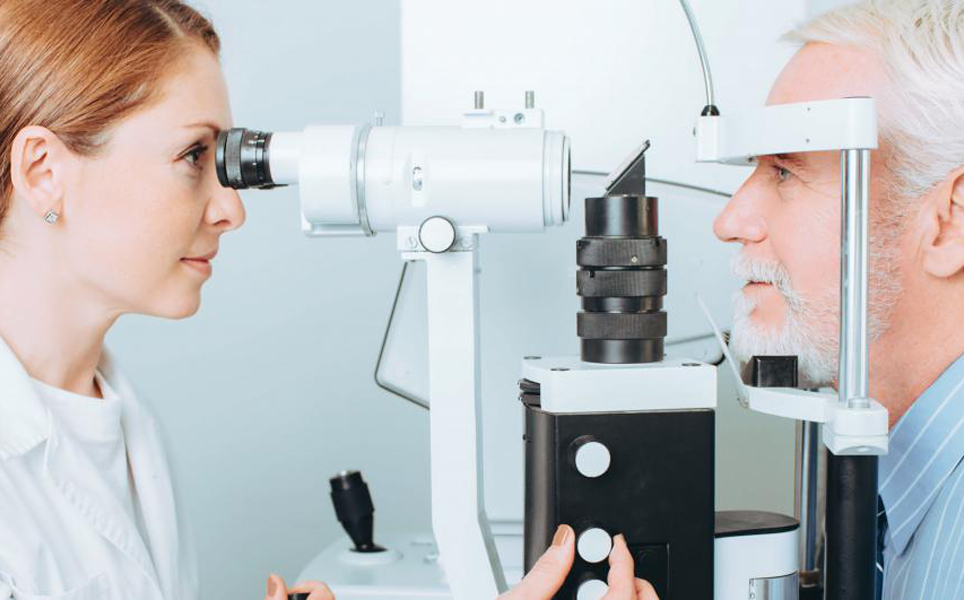
Clues to cognitive decline in diabetes
Banner image credit: Justin Rustenhoven
Take a look at our previous top neuroscience stories:
Sign up to receive our latest news
Find out about Scientifica's latest product releases, company news, and developments through a range of news articles, customer interviews and product demonstration videos

)